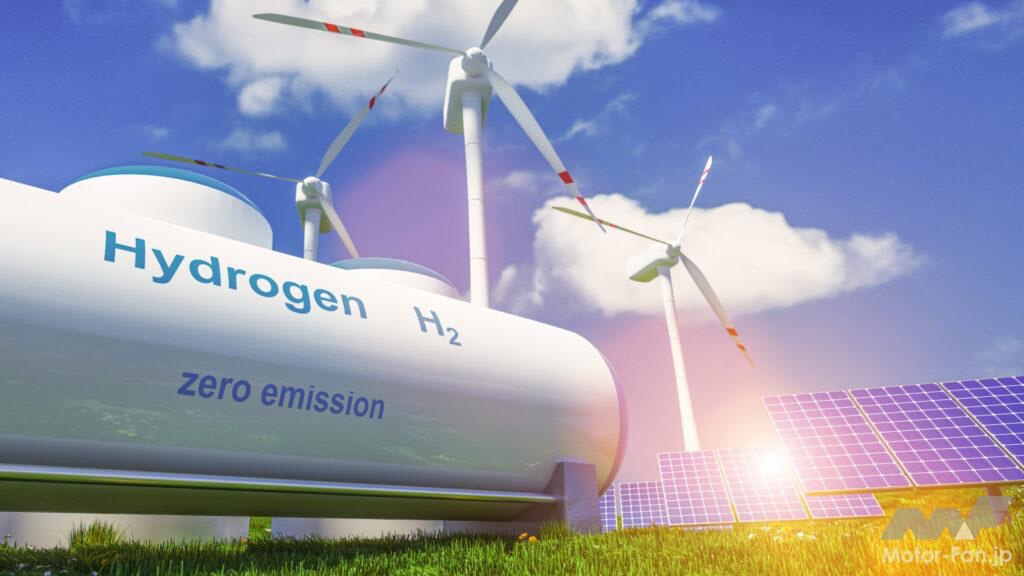
Bosch:水電解装置のスタックを開発:
développé une pile d’électrolyseurs d’eau:
Entwicklung eines Stapels von Wasserelektrolyseuren:
developed a stack of water electrolyzers:
開發了一堆水電解槽
ボッシュ:
水電解の中核コンポーネントであるスタックを開発する。
燃料電池と同様、水電解の重要なコンポーネントとなるのがスタック。
スタックを開発:
これは「直列に接続された数百の個別セル」から構成される。
各セルで、「電気を用いて水が水素と酸素に分解される」仕組みだ。
燃料電池とは逆反応。
プロトン交換膜(PEM):
プロトン交換膜(PEM)によって化学反応が促進される。
ボッシュは多くのパートナーとともに、
水電解システム・スタックの「スマートモジュール」を開発する。
2025 年以降供給:
来年にはパイロットプラントの稼働、2025 年以降、事業者に供給する。
Motor-FanTECH.
https://motor-fan.jp/tech/article/20539/
Bosch : a développé une pile d’électrolyseurs d’eau
Bosch :
Développer une pile, qui est un élément central de l’électrolyse de l’eau.
Comme les piles à combustible, la pile est un élément important de l’électrolyse de l’eau.
Développer la pile :
Il se compose de “centaines de cellules individuelles connectées en série”.
Dans chaque cellule, l’électricité est utilisée pour décomposer l’eau en hydrogène et en oxygène.
Il produit de l’électricité en combinant de l’hydrogène et de l’oxygène.
Réaction opposée à la pile à combustible.
Membrane échangeuse de protons (PEM):
Dans les deux cas, la membrane échangeuse de protons (PEM) facilite la réaction chimique.
Bosch, avec de nombreux partenaires
Faites un “module intelligent” pour la pile du système d’électrolyse de l’eau.
Approvisionnement après 2025 :
L’usine pilote entrera en service l’année prochaine et sera fournie aux entreprises après 2025.
Motor-FanTECH.
Bosch: Entwicklung eines Stapels von Wasserelektrolyseuren
Bosch:
Entwickeln Sie einen Stapel, der eine Kernkomponente der Wasserelektrolyse ist.
Der Stack ist wie die Brennstoffzelle ein wichtiger Bestandteil der Wasserelektrolyse.
Entwickeln Sie den Stack:
Es besteht aus “Hunderten von einzelnen Zellen, die in Reihe geschaltet sind”.
In jeder Zelle wird Strom verwendet, um Wasser in Wasserstoff und Sauerstoff zu zerlegen.
Es erzeugt Strom durch die Kombination von Wasserstoff und Sauerstoff.
Entgegengesetzte Reaktion zur Brennstoffzelle.
Protonenaustauschmembran (PEM):
In beiden Fällen erleichtert die Protonenaustauschmembran (PEM) die chemische Reaktion.
Bosch, mit vielen Partnern
Machen Sie ein “intelligentes Modul” für den Stapel des Wasserelektrolysesystems.
Versorgung nach 2025:
Die Pilotanlage soll nächstes Jahr in Betrieb gehen und nach 2025 an Unternehmen geliefert werden.
Motor-LüfterTECH.
New area of business: Bosch to develop components for hydrogen electrolysis
Technology for hydrogen generation expected to go into production in 2025
Bosch to develop the stack – the core component of an electrolyzer.
Bosch to invest up to 500 million euros in this new area of business by the end of the decade.
Stefan Hartung:
“Our intention is to use Bosch technology to support the rapid expansion of hydrogen production in Europe.”
Bosch is to develop the stack – the core component of an electrolyzer
As in the fuel cell,
the key component of an electrolyzer is a stack, which comprises several hundred individual cells connected in series.In each of these cells,
electricity is used to split water into hydrogen and oxygen.This is the reverse of what takes place in a fuel cell, where electricity is generated by combining hydrogen and oxygen.
In both cases,
the chemical reaction is facilitated by means of a proton-exchange membrane (PEM).Bosch is collaborating with a number of partners
to develop a way of combining the electrolyzer stack with a control unit, power electronics, and various sensors to create a “smart module”.
With pilot plants scheduled to commence operation in the coming year,
the company plans to supply these smart modules to manufacturers of electrolysis plants and industrial service providers from 2025 onward.
– Bosch Media Service